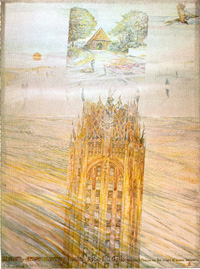|
An introduction to Bob Gallo, as a person and a scientist, would
certainly be superflous. I would therefore simply like to draw a
parallel to the life of the lectures eponym, Hans Eidig. The name
of this special lecture reminds us not only of particular historical
circumstanCes but, more importantly, of this man's life. Hans Eidig
was born in 1804 in the village of Klein Klecken. It was originally
intended that he should become a forest ranger, as was his father.
However the yearning for freedom and independence, which was to
innuence his entire life led him to become a poecher rather than
a forester. He was very good at this, and there was a great demand
for his services. But his desire for freedom and independence was
too strong for the restraints of his way of life, not afraid of
this risking his life for others, he became the Robin Hood of the
Lüneburger Heide. He had good friends and advisors as well as many
enemies. In 1835 he agreed to the king's offer to accept the cash
reward on his head and to emigrate to America. He arrived in New
York with his girlfriend, dreaming of freedom and independence.
Thereafter we largely lose track of his life in the new continent.
However, those of us from this region believe that he traveled to
the West Coast of the United States where he discovered gold. Although
I do not know whether this legend is true, it remains very much
alive here, and today's inhabitants of this village remember him
as a local hero who always tried to protect our ancestors from humiliation
at the hands of their feudal masters. In the New World Hans Eidig
gained the freedom and independence that he had always sought. Against
the background of these words honoring the memory of Hans Eidig,
I should like now to present Bob Gallo, who will explain the origin
of human leukemia. |
